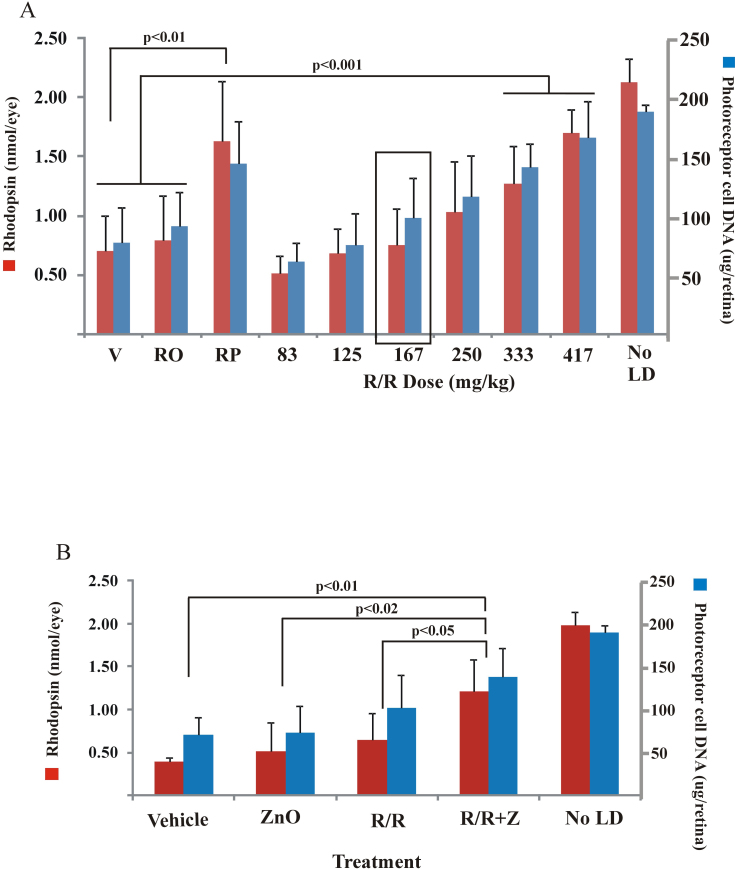Figure 5.
Visual cell survival in light-exposed rats given rosemary oil extract. A: Dark-reared rats were treated with different volumes of rosemary oil extract dissolved in a commercial mixture of polyunsaturated fatty acids (ROPUFA) and then exposed to 4 h of moderate intensity green light. Rhodopsin and photoreceptor cell DNA were measured 2 weeks later. A nearly linear increase in visual cell survival occurred with increasing doses of rosemary in ROPUFA (R/R). For both the 333 and 417 mg/kg doses, rhodopsin and DNA levels were significantly higher than for the Tween-80 vehicle (V) or ROPUFA (RO) alone. These values were nearly the same as for a detergent extract of rosemary powder (RP) given at 34 mg/kg bodyweight. No LD represents data from rats unexposed to intense light; n=4-8 rats per dose, ±standard deviation. B: Rats were treated with rosemary oil plus zinc oxide and then exposed to intense white light. Rosemary oil (167 mg/kg) alone (R/R), zinc oxide (0.65 mg/kg, ZnO) alone, or rosemary oil plus zinc oxide (R/R+Z) was given to rats 1 h before intense light exposure. Rhodopsin and DNA were measured as described in the Materials and methods section. At the doses used neither R/R nor ZnO was effective when compared to vehicle treatment. Visual cell survival for R/R+Z-treated rats, however, was significantly higher than for vehicle, ZnO, or R/R alone. Values for rhodopsin and DNA in vehicle-treated rats exposed to light are the average for 1% Tween-80/10% ethanol, ROPUFA, and acidified water vehicles. For these experiments there were n=4-5 rats per dose and the data is presented ±standard deviation.

